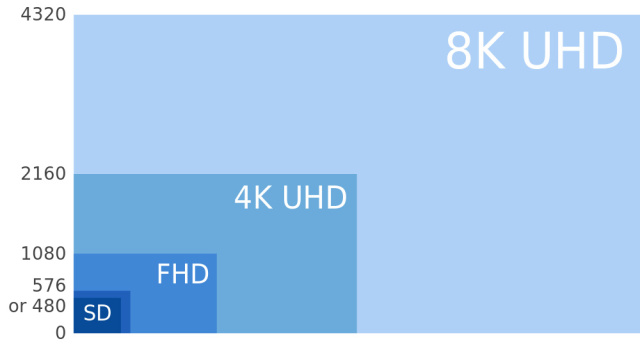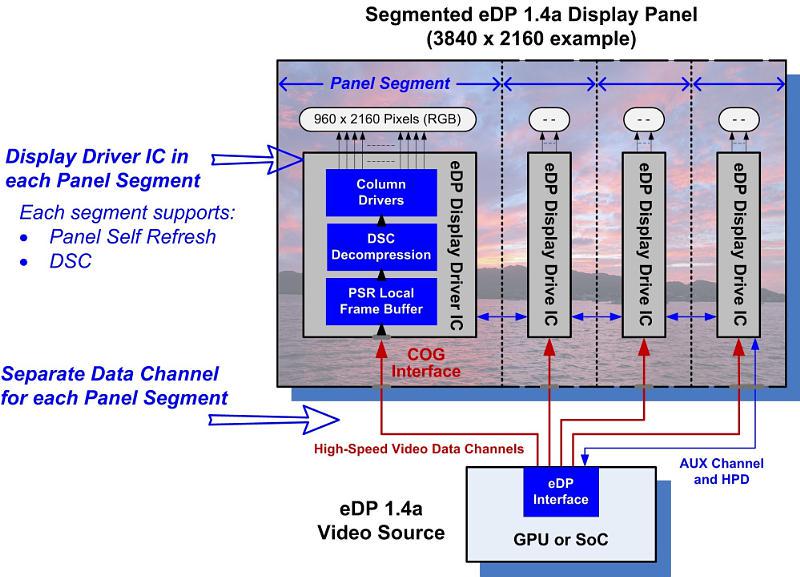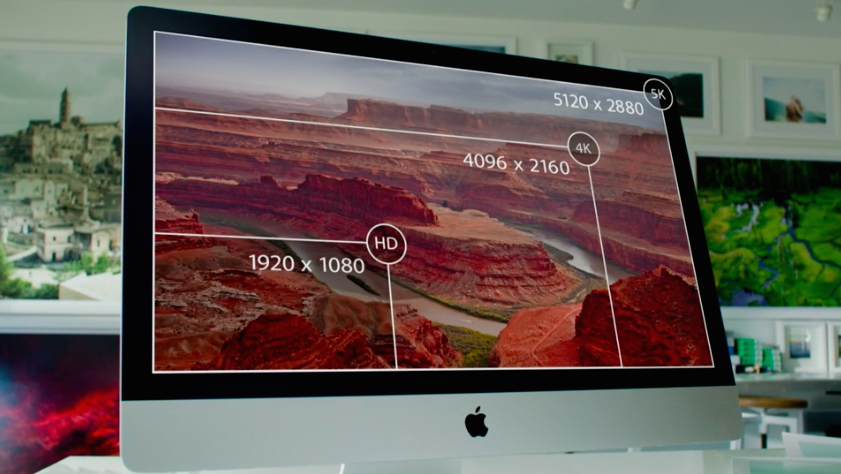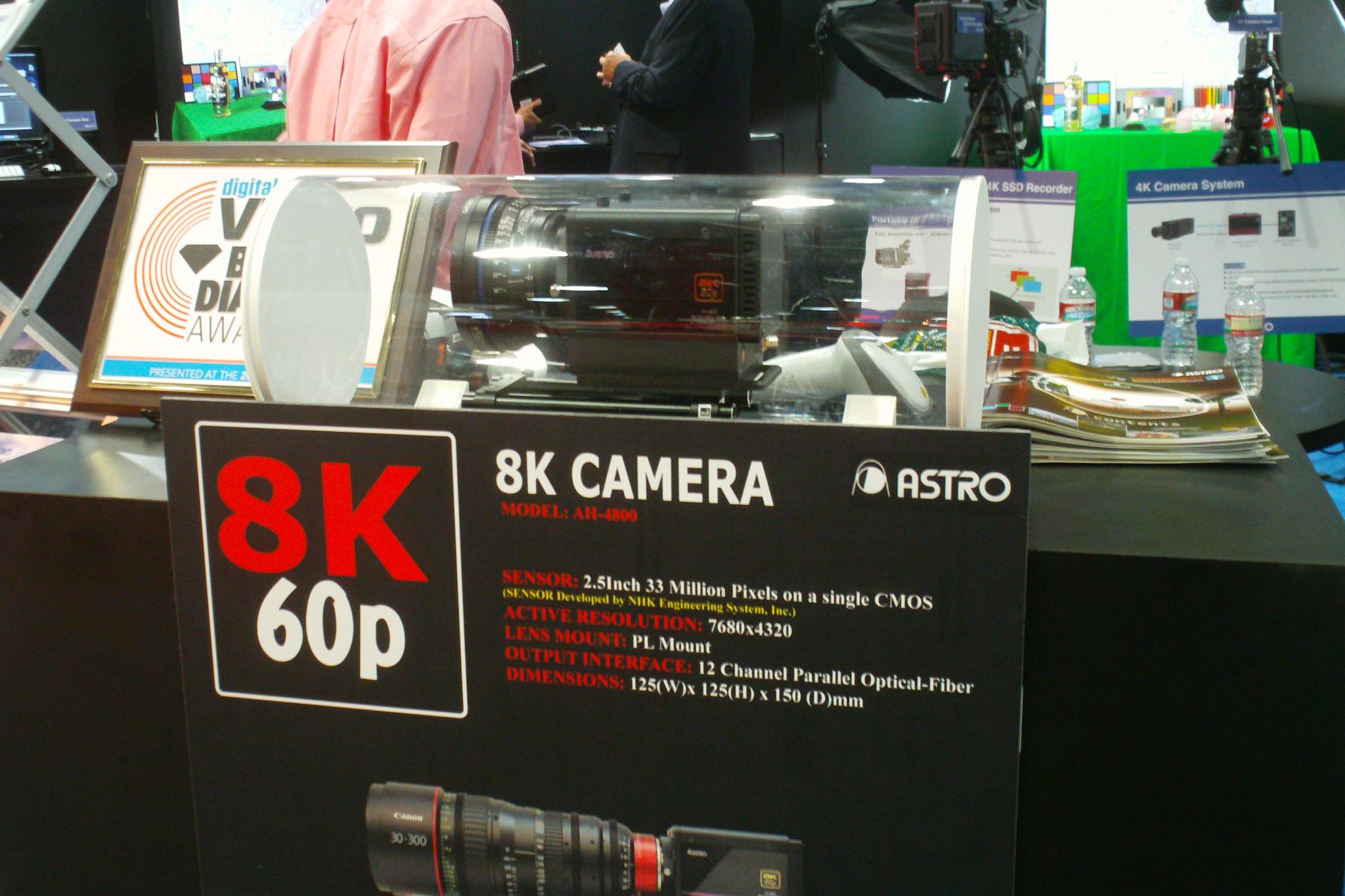The Video Electronics Standards Association, or VESA, announced yesterday an update to the Embedded DisplayPort standard used in notebooks, desktop computers and other devices.
An improvement over the current DisplayPort 1.2a, the Embedded DisplayPort Standard 1.4a paves the way for notebooks, tablets, smartphones and all-in-ones with screen resolutions of up to 8K, or a whopping 7,680-by-4,320 pixels.
First gadgets using the new standard, based on Intel’s upcoming SkyLake chipsets, are expected to hit the market by 2016.
VESA says the new version 1.4a standard enables higher video data transfer rates while supporting Adaptive Sync technology, greater color depth and higher refresh rates, including 120Hz in 4K.
Based on a “visually lossless” compression, the new standard uses four high-speed (HBR3) lanes between the graphics adapter and display, with each lane capable of 8.1Gbps for a total theoretical bandwidth of 32.4Gbps.
As noted by ArsTechnica, that’s enough bandwidth to drive a 4K display at 120Hz with 10-bit color or an 8K display at 60Hz.
The “Embedded” in the standard name means that the new DisplayPort has been designed to drive screens in notebooks, tablets and all-in-one desktop computers, but not the panels in external displays.
The 1.4a also supports the Multi-SST Operation and Partial Update features. The former enables thinner, lighter and cheaper panels that use less power. The latter, part of Segmented Panel Display feature, should allow for power-efficient performance by only updating a portion of the display that has changed since the video frame update.
Compared to other embedded interfaces, the new DisplayPort standard has “the richest feature set along with the lowest power, wire count and EMI radiation, particularly when used with high-resolution panels,” according to Craig Wiley, senior director of marketing at Parade Technologies, VESA board member, and editor for eDP 1.4a.
Apple’s older Mac notebooks feature a miniaturized variant of the standard DisplayPort. Thunderbolt I/O that recent Macs use is compatible with DisplayPort monitors, projectors and other external devices.
To quickly refresh your memory, Apple’s Retina devices top out at the 1,920-by-1,080 pixels on the iPhone side, or 2,048-by-1,536 pixels on Retina iPads. As far as notebooks are concerned, the 15-inch MacBook Pro with Retina display sports a Retina resolution of 2,880-by-1,800 pixels.
The 27-inch iMac with 5K Retina display features a resolution of 5,120‑by‑2,880 pixels. Back in September, VESA announced the 1.3 standard with 5K support.
MacBook Airs and Apple’s Thunderbolt Display are currently stuck at non-Retina resolution of 1,440-by-900 and 2,560-by-1,440 pixels, respectively.
On an 8K screen sized 52 inches, the human eye cannot discern the individual pixels from a distance of 50.8 cm, or about twenty inches. On a 92-inch screen, that distance is 91.44 cm, or about three feet away from the screen.
Some filmmakers use 8K cameras with a wide lens to capture action at a farther distance from a potentially dangerous subject, cropping the image digitally in post-production to match the current 1080p industry standard for high-definition televisions.
Now that the technical groundwork has been laid out, all eyes are on companies like Apple and Samsung which are expected to take advantage of an ultra high-resolution screens in their products.
The Astro Design 8K camera seen below was unveiled at CES 2013.
It’s debatable whether a 4K screen, let alone an 8K one, makes sense on a large form-factor tablet or a MacBook Air-class notebook.Truth be told, more pixels does mean less jagged edges on typefaces, smoother curves and crisper user interfaces overall.
But pushing that many pixels will require much beefier GPUs that in turn will consume more power and require stronger backlighting. The massive computational and bandwidth requirements mean that we won’t be seeing 8K tablets and notebooks anytime soon.
8K also begs the question of content. None of the five major Hollywood studios — and only some of the over-the-top video providers such as Netflix — are streaming select movies and TV shows in 4K.
Movies offered on iTunes are still in full HD resolution of up to 1,920-by-1,080 pixels, thank you very much. Therefore, until Apple and the rest of the industry starts streaming entertainment in 4K and 4K phone cameras become ubiquitous, there’s going to be little incentive to upgrade to 4K or 8K in the next year or so.
Image top of post courtesy of Wikipedia.
Source: VESA



